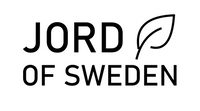
More
Sustainable materials
We say "more" because anything you buy will eventually have a negative impact on the environment.
But if you need to buy it, buy something that's more sustainable and consequently better for your health.
Bamboo is a natural fiber that is sometimes unfairly questioned whether it is environmentally friendly or not. The cultivation of bamboo for textiles requires very little soil, nutrients and water to grow. The rainwater is usually sufficient and the bamboo grows 24 meters in 40 days before it is harvested. No pesticides are needed either because bamboo has a substance in its bamboo-kun that protects against infestation. Bamboo is simply biologically efficient and using bamboo instead of other trees is considered to help slow down the devastation of important forest areas. The production of the bamboo textile we've choosen is largely mechanical in nature with a minimal impact on nature and is thus a "more" sustainable choice with all the good properties that bamboo has.

Bamboo textiles have a natural ability to "breathe", temper well. Cool when hot and warm when cold. The fibers are round and smooth and are soft and do not irritate the skin. The material is antistatic. It is also antibacterial and therefore feels fresh for a long time. The absorption is 3-4 times greater than in cotton, but the fabric still dries quickly. Bamboo feels really luxurious and is still affordable. The soft bedding and towels feel almost like silk against the skin.
Our bamboo products are made of so-called "green bamboo" and has Oeko-tex 100 marking and Safe textile marking.

Hemp is an old cultural plant that is now having a renaissance in e.g. the textile world. It is recognized as an ecological and sustainable alternative to many other materials.
When growing hemp, no chemical weed control is needed. The plant can grow up to 8 cm per day if the conditions are favorable. Our hemp is grown and processed in the Poltava region.
Traditionally, hemp has been used as a textile naturally undyed or with natural bleaching made it whiter. The strength of the fibers decreases when in contact with chemicals that are available in all conventional colors. Dyeing the fibers is seldom a good choice as the fibers do not absorb color very well and also fade when exposed to light.
What characteristics does hemp have?
Hemp is durable and has a relatively low weight. The textile is dirt-repellent and has an inherent resistance to mold.
The fibers are hollow and give the blanket good air circulation and therefore temper very well. They also have antiseptic properties. The material dries quickly when it absorbs moisture during sleep. It is considered a good choice for allergy sufferers and asthmatics.
Hemp is a material that we have been looking at for a long time with great curiosity. We have been looking closely for smaller manufacturers in Europe. We want to work together and closely with small-scale enthusiasts, and we want to reduce the distance for transporting goods. In 2017, we started a collaboration with a small European producer and we have now started to launch the first common products in our webshop: duvet, pillow and socks. In 2018 we were able to introduce bedding and soaps and in 2019, shawls have arrived. More products are under development and will arrive in 2019.
Linen is one of the most widely used fabrics and it comes directly from the flax plant. Known as a strong, durable, and absorbent fabric, linen is almost always found and used as a fabric for bedding because it’s soft, comfortable, and it dries much faster than cotton – making it an ideal fabric for people who sweat when they sleep.
Linen is best described a fabric that is made from very fine fibers, derived from the flax plant. These fibers are carefully extracted, spun into yarn, and then woven into long sheets of comfortable, durable fabric called linen fabric.
Linen comes from the flax plant. It’s fibers are spun into yarn and then woven into fabric used for bedding, window treatments, bandages, and home accessories. Linen is lightweight, a great conductor of heat, naturally absorbent, and antibacterial.

Linen is antibacterial
We can’t forget that one of the biggest benefits of linen is that it is entirely antibacterial. This means that harmful bacteria and other germs have a difficult time surviving within the fine and closely woven fibers, making linen a highly desirable fabric.

Silk is a protein fiber made from silkworms. When a silkworm develops into an adult, it eats and spins a cocoon from a single thread. Inside the cocoon, the silkworm first develops into a pupa, then into a moth, which then tries to leave the pupa. The moth achieves its escape route by secreting a liquid, which dissolves a hole in the cocoon through which it can escape.
Heat is used to soften the hardened threads so that they can be unwound. very thin silk threads are wound together into a thread with a slight twist. The process is called philately or "silk stitching".
Silk is a renewable natural resource and 100% biodegradable. Because silk is a continuous thread, it has a high tensile strength. In woven silk fabrics, the triangular structure of the silk acts as a prism that refracts light, which gives silk garments / products their highly valued natural luster.
Silk has good absorbency and is easy to dye.
As a natural fiber, silk / silk is completely biodegradable according to its lifespan.
The silkworms used for wild silk or tussah silk or tasar silk live on leaves, not necessarily mulberries, and do not harm the pupa. Tussah silk is derived from cocoons collected after the moth has left the cocoon naturally in the wild. Because the cohesive silk fiber is broken into smaller pieces of the starting hole made by the mill, wild silk has a more uneven and coarser surface than cultured silk.
Our silk quilts and silk pillows are handmade in China. Layers have been laid on layers of flower-thin unbleached natural mulberry silk, according to ancient Chinese handicraft tradition. The silk is surrounded by a cover on the habota side.
Organic cotton is generally less polluting than regular cotton, mainly because organic cotton does not use any pesticides. Unfortunately, as with most industries of its size, current methods of producing conventional cotton tend to be very environmentally unfriendly.
So cotton is sustainable, well, yes and no. Cotton is an all-natural fiber that grows well in many climates and is relatively easy to harvest. It's washable, breathable, absorbent and sturdy. It can be recycled and made into yarn or new clothes. Cotton is versatile and can be made into everything from jeans to sweatshirts. It also blends well with other fibers to create unique fabric blends.
All of this combined means that cotton has the potential to be a fully sustainable resource, it just isn't getting there.

Why is cotton unsustainable?
Around 5000 BC, people began picking and using cotton, which was then turned into fabric. However, not all of this happens in cotton fields, which is where many of cotton's sustainability issues begin.
What is the impact of cotton?

Soil degradation
According to WWF, growing so much conventional cotton can have a negative and lasting impact on the world's soils. Global cotton acreage has remained the same for the past 70 years, but cotton cultivation has begun to degrade the soils of these plantations.

Chemicals and pesticides
Common Objective reports that conventional cotton production involves the use of several chemicals. Pesticides and insecticides are used to keep the crops safe from insectile interruption. Those chemicals can pollute whole ecosystems and water supplies, but some of the harsher ones might wind up growing into the cotton itself.

A thirsty fabric
Cotton production uses a lot of water. Most of that water comes from irrigation, not from rain. This is due to the fact that the majority of cotton production happens in places where the climate tends to be on the warmer, less rainy side.
Cotton uses so much water, in fact, that it contributed greatly to the shrinking of the Aral Sea in Central Asia. According to National Geographic, the combined decades of drought and diverting water to the cotton farms shrank the Aral Sea to a mere 10 percent of its former volume.



